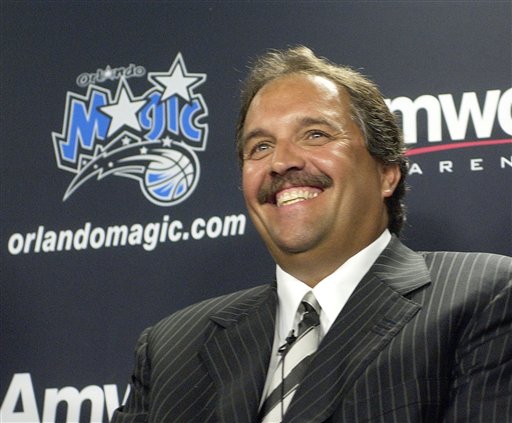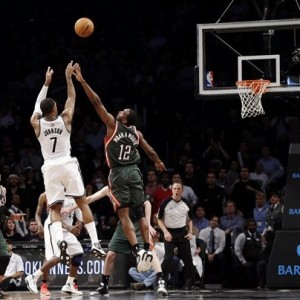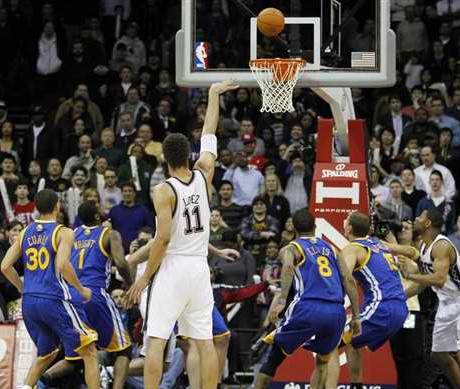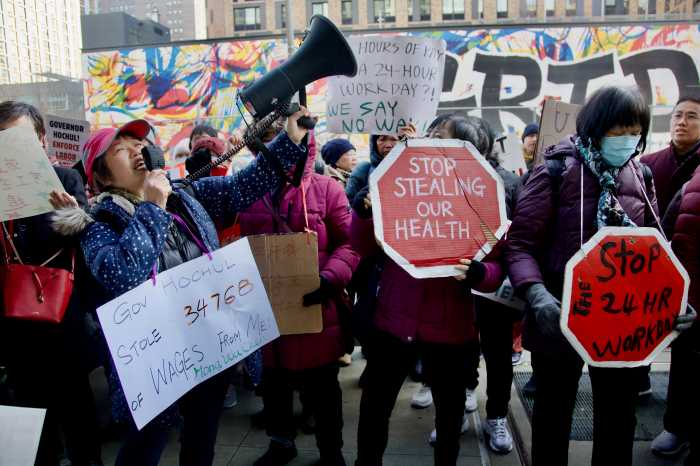To say that Julius Erving was before my time is a pretty significant understatement. Julius was born in early 1950. He became a professional basketball player in 1971. I was born in late 1983. Julius retired in 1987. I didn’t even think of basketball until 1994. The closest I had gotten to Dr. J was almost buying his Converse All-Star Dr. J 2000 shoes in the late ‘90s.
To be perfectly honest, my mom was the first person to let me know who Dr. J was, before I even had basketball on my agenda. I had absolutely no idea. She described him as one would a pop icon. And then other family members, who grew up in the ‘70s, they told me about him. They spoke as if he were a great prophet or a disciple of Christ. I couldn’t really fathom it. “He was like Michael Jordan!”, they told me. That didn’t compute. You know why? Because I saw Michael Jordan… and NOBODY was better than him, I thought (and still think).
But I wasn’t there.
So…when given the honorable task to compose a piece on The Doctor, I sought out the four men I knew would have the vision that I lacked. I sought a teacher, an artist and colleague, I sought a coach, and I sought a basketball playing legend. The four men — Vince Carter, Michael Tillery, Jayson Gee, and Charles Oakley — had what I needed, so instead of me trying to do it all on my own, I let these guys talk to me and give me the knowledge I lacked.
I first went to Vince Carter … and I know what you’re thinking. Not Vinsanity, but this Vince (a public health educator and lay NBA historian based in Ohio) first imparted to me the knowledge of the NBA and from whom my story with the roundball starts:
Dr. J was definitely the mini-Michael Jordan before Michael Jordan. In the ‘70s, there wasn’t that much television exposure, so we didn’t get to see him that much, but everyone had Js, I had Js back then, the leather All-Stars, and Dr. J was THE MAN, and they showed was highlights of him dunkin’ in the Dunk Contest, but when he was with the Nets, he was…practically unstoppable.
He was quick, he was fast, he was constantly goin’ to the hole, he would swoop in…I mean, he was great. Then, in the ‘80s, he was on the Sixers, and that’s when most people saw him. Even me…we didn’t really get to see a lot of NBA ball back then. I had literally had to go to my grandmother’s house, who lived on the top floor of her high-rise, so we could get the Cincinnati channel…we didn’t get NBA games all the time here.
Dr. J was definitely The Man. Him, and Kareem, and Walt Frazier were my favorite basketball players growin’ up. …Dr. J was mythic. He was the guy everyone wanted to be, everyone talked about Dr. J…and then when he got to the Sixers, that was my favorite team, because I wanted Dr. J to win. Everyone I knew, everyone I talked to, Dr. J was their favorite player, we all wanted Dr. J to win.
As much as I loved the Lakers, I loved Dr. J. and I loved the Sixers and I loved that team. And then I remember a year or so after that, they made a mistake…they traded away their 1st-round draft pick, they sent Roy Hinson to Cleveland, and somehow or another, the Sixers missed out on getting Brad Daugherty, which just…I don’t think they’ve recovered from it yet. I mean, Cleveland, back then, Cleveland became…they didn’t win a championship, but they were the best regular-season team for a while, and I’ll never forget the look on Dr. J’s face when the trade when down, and he said, “Well, I just think there have been some mistakes in management.”
J was a great, great player…in his ABA days, they said he was just completely unbelievable, lightning fast…I heard Bob Ryan say that he was “Iverson-like fast”, but at 6’6”. Dr. J was The Man, he was the NBA for a lot of people.
And then I went to Michael Tillery, a nationally-known and respected writer, who himself is a native Philadelphian and is in involved with a documentary on the better-known No. 6; Michael was flabbergasted when I informed him of The Doctor’s No. 2 ranking by NAS:
NUMBER TWO?? WHAT??!! Doc won two championships for ‘em! Doc won two championships with the Nets! They lost in the Finals in the one in-between, it would’ve been three straight (championships)!
Most of the talent was in the ABA at the time…Doc was Michael Jordan when he was a New Jersey Net, you know? He wasn’t Michael Jordan when he was a Sixer, he was Michael Jordan as a Net.
He’s one of the most underappreciated players of all-time, because coming out of college, I think he was, like, one of five people to average 20 and 20 – 20 rebounds, 20 points — nobody knew Doc, because he wasn’t on TV…he was larger than life…it wasn’t until people saw him play that they saw how glorious he was as a basketball player. On dunks, Doc was over the rim, he was over the rim…he was just an incredible athlete. He was an athlete at the time when there just wasn’t THAT type of athleticism, you know? So it was the same thing with Michael Jordan at the time…it’s a shame that people just won’t see that, because they separate the ABA and the NBA. Doc was just an amazing player. He was electrifying.
He obviously wasn’t as skilled a jump shooter as Mike. I think Mike kind of evolved from Doc, Mike kind of evolved from Magic and Larry as well…he had those figures to put his talent up against and that’s how he got better. But obviously, when Mike came into the league, the guy that he looked at, more than anyone was Doc. I’m just glad that Mike did have Doc to look up to, you know, because we might not have had the arguable G.O.A.T.
The best thing about Doc is…Doc was like a comic book hero, you know? He was this afro. When people looked at afros at the time, we actually thought about the Civil Rights Movement, but we also thought about Julius Erving. We all wanted to have that afro at the time, you know?
The first sneaker thing, the first sneaker, really, was Doc, in terms of first contract…there was just so much that Doc did.
I think it was ’72, he was drafted 12th overall by Milwaukee, and he decided to go to Atlanta, and he played three exhibitions, and that’s where he was playin’ one-on-one with Pistol Pete (Maravich)…how would we perceive Dominique (Wilkins) if Doc had played for Atlanta?
We didn’t see Doc in his prime, we saw Doc maybe like what Kobe Bryant is now…that’s what Doc was when he came into the NBA. In terms, of his skills. He was coming down athletically…mind you, Kobe is one of the greatest athletes we’ve ever had in the league. He was probably Kobe where (Kobe) is now, maybe last year, or the year before, before all those Olympic games, all that stuff. We didn’t get to see the true Julius Erving, we really didn’t.
I asked Bob Ryan, “Do you think that Larry and them would be the players they were without Dr. J?” and he emphatically said “NO.” They had to get through him. Either Boston had to beat Philly or the Lakers had to beat Philly in the Finals, and this was before Moses even came on board.
And so that was that, in Michael’s enthusiastic retelling of Doc, but then I still felt I needed a bit more. I sought for the man who literally taught me the game, just a day after I watched my first NBA Finals, the final game of the 1994 NBA Finals. This man is Jayson Gee, a longtime NCAA D-1 coach, currently an assistant for Cleveland State University and the man who helped nurture former NBA first-round pick Gary Trent and soon-to-be rookie, 2011 first-round selection Norris Cole of the Miami Heat:
Dr. J was my 1st superstar! I remember when I was a young kid and just starting to watch the NBA and being star struck by his athleticism and character. The things he could do on the basketball floor were simply amazing. He was who we (my friends on the playground) attempted to emulate. Everyone wanted to be Dr. J!
I also admired the way he carried himself on the court, his professionalism and leadership. It was easy to look up to him and root for him to win a championship. They were “my” team! I remember when they first got Moses Malone and I realized he was the missing piece for them to win an NBA title. Maurice Cheeks, Andrew Toney (who trained [2011 Miami Heat 1st-round draft pick] Norris Cole for the draft), Bobby Jones and Co. seemed to be a cut above everyone else in the league and Julius Erving was at the head of it all.
I have also attempted to emulate Julius Erving as a person. His calm, steady, and consistent demeanor always stood out to me. The way he has represented the game since his retirement are noteworthy. He is a pillar of strength and a consummate role model.
And lastly, I went to the man I first saw in the first NBA game I ever watched, the night before I went to Jayson to learn the game. I went to New York Knicks legend Charles Oakley, now an assistant coach for the Charlotte Bobcats. I honestly didn’t know what Charles might bring me in terms of perspective on The Doctor. As many know, when you talked to Oak, you’re gonna get a dosage of his brand of truth and more than anything, more than what he actually says, it’s his feelings:
I’m real good friends with Doc…he’s just a genuine guy, I mean, charisma, swagger, he keeps a smile on his face…he meant a lot back in the day, lookin’ like The Jackson 5, flyin’ through the air. I got the chance to play ball with him before he got out the league, a couple of summers, we played pick-up ball together, and (I) see him on the golf course, play golf against him, he’s just a great guy…he’s just doing what The Doctor do, tryin’ to operate.
When I was a kid…I stayed busy…we really didn’t stay in the house…we were playin’ football or doin’ somethin’, we didn’t stay in the house like this era of kids…when we was growin’ up, we only saw the games on weekends, we didn’t have cable, (on) Sunday we went to church, it wasn’t just about watchin’ television, but as I got older, I learned more about him.
Just bein’ around him…his face is out a lot…but…he was in that Dr. J “Dr. Pepper” commercial – that commercial should’ve been out years ago.
I think Dominique is somethin’ like Dr. J.
At this point, I may never know all that I could know about Dr. J. I wasn’t around, and I still can’t fathom his heyday essence, but I’ve gotten closer. I didn’t know that he was anything near as fast as Allen Iverson. I had no clue that he was anything but comparable to Michael Jordan, and I told Oak that it was the first time in life that I heard anyone say that Doc was like ‘Nique.
Up until now, it’s fair to say that I didn’t care about Doc as much as I probably should’ve, but now I do care more. It’s not just about the Converse Pro Leather Dr. J sneaks. It’s not just about the throwback Nets jersey he wore or the Mitchell & Ness Sixers No. 6. It’s not just about the afro or the gangly frame. Dr. J was and still is about the way he played and how he did what he did on the hardwood in the first place. That’s what makes him relevant. That’s what makes Julius Erving a living legend of the highest degree.


















